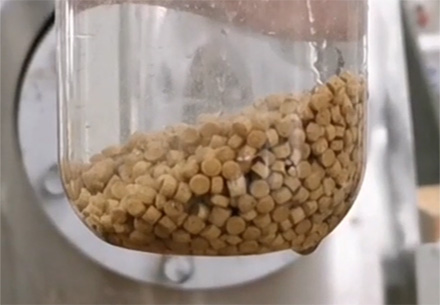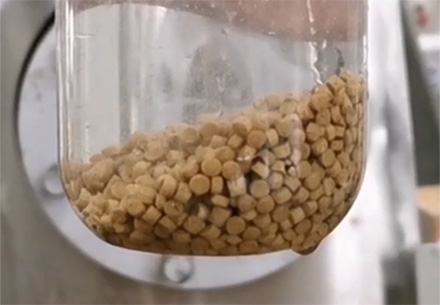


After more than 10 years of research on fish feed, Jinan Kelid Machinery Co., Ltd. has concluded that there are 3 main factors that affect the floating and sinking of fish feed.
Today we will discuss these 3 factors.
Why does fish feed float and sink?
The root cause is the degree of puffing of the fish feed. The higher the degree of puffing, the more pores in the fish feed, and the easier it is to float; the lower the degree of puffing, the fewer pores in the fish feed, and the easier it is to sink.
Therefore, the control of whether the fish feed floats or sinks mainly depends on the degree of puffed of the feed. Next, let's discuss how to control the puffed degree of fish feed.


Temperature:
The higher the temperature, the higher the degree of puffing. Therefore, when you want to make floating fish feed, the temperature of the extruder needs to be set relatively high, such as:
Zone I is 50°C, Zone II is 80°C, Zone III is 130°C, Zone IV is 150°C
The lower the temperature, the lower the degree of puffing. Therefore, when you want to make sinking fish feed, the temperature of the extruder needs to be relatively low, such as:
Zone I is 50°C, Zone II is 80°C, Zone III is 100°C, Zone IV is 110°C
Raw Material:
Fish feed formulas generally have the following types: protein, fiber, starch, oil, etc. (and some other raw materials, such as vitamins, seasonings, etc.)
For starch, a raw material with good puffing effect, if the content of such raw materials in the formula is higher, the fish feed produced will be more likely to float.
For raw materials such as protein, fiber, and oil, they are not easy to expand. Therefore, the higher the percentage of such raw material in your formula, the more likely the feed will sink.
To sum up, the fish feed with more starch content in the formula is more likely to float; on the contrary, the fish feed with more protein, fiber, oil and other raw materials in the formula is more likely to sink.
Therefore, the floating and sinking of the fish feed is controlled by adjusting the content of different raw materials in the formula.
Moisture:
The higher the moisture content, the harder it is to puff. The less moisture, the easier it is to puff.
Therefore, when making floating fish feed, the moisture is controlled at about 13%. When making sink fish feed, the moisture is controlled at about 20%.
The capacity of our fish feed production line is 140-160kg/h, 240-260kg/h, 400-500kg/h, 800-1000kg/h, etc.
The production line configuration can be customized according to customer requirements. Welcome to consult.